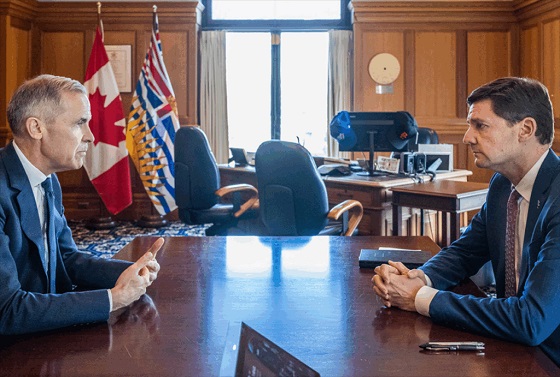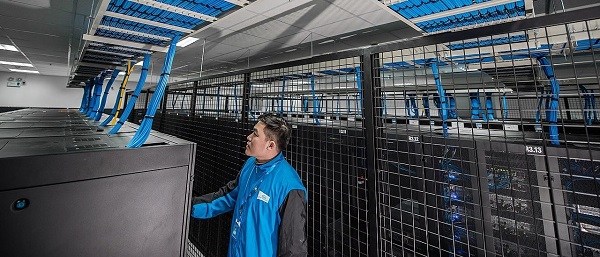Alberta
Before Trudeau Blames Alberta, Perhaps He Should Look in the Mirror

From EnergyNow.ca
There has been a lot of talk about how Premier Danielle Smith did not sign a statement of support with the Government of Canada regarding a unified response to any tariff action taken by incoming President of the United States, Donald Trump.
Trudeau singles out Alberta premier for not putting ‘Canada first’ in break with other provinces
Thanks for reading William’s Substack! Subscribe for free to receive new posts and support my work.
While it is easy to throw stones at Premier Smith and call her actions one of selfishness, placing the interests of Alberta ahead of Canada, I think there are a number of reasons why one could reply that she was well within her right to act as she did. Over the last decade, Trudeau has gone out of his way to vilify the oil and gas industry, through his continual bad mouthing of the industry as being antiquated, and implementing policies that ensured that capital flight from the space accelerated, infrastructure projects were cancelled and massive levels of uncertainty were overlaid on the investment landscape going forward. Despite all this, the oil and gas sector still remains one of the most important economic contributors to the economy and is the largest component of exports from Canada to the United States, and it isn’t even close.

The Observatory of Economic Complexity (OEC)
The ironic thing of all this? To get oil to the refineries in the east, you need to IMPORT it by pipeline from the United States or primarily by ship to Quebec and New Brunswick. Had the Energy East Pipeline been built, Canadian refineries could have had Canadian domiciled product to satiate them. Moreover, had Northern Gateway been built, we would have diversified our client list beyond the United States. Sure, the Trans Mountain Pipeline was built, at extraordinary cost and timelines, and some “credit” is due to the Government getting it done, but the proof is in the current landscape that we operate in.

Now, coming back to the beginning. Why do I think Trudeau should look in the mirror before throwing rocks at Premier Smith? I come back to 2015 when Trudeau said Canada is the world’s “first postnational state” and that “there is no core identity, no mainstream in Canada.” He has gone about taking away what many of us grew up with, namely a sense of Canadian identity, and tried to replace that with shame and no collective identity. What is a post nation state you may ask? Post-nationalism or non-nationalism is the process or trend by which nation states and national identities lose their importance relative to cross-nation and self-organized or supranational and global entities as well as local entities.
So, is it any wonder that people are starting to question what is Canadian any more? At a time when Canada is under significant threat, the irony that Alberta likely represents the best tool in this tools (Trudeau) economic toolbox, is wildly ironic. As they say, karma’s a bitch.
Thanks for reading William’s Substack! Subscribe for free to receive new posts and support for his work.
Alberta
Alberta Emergency Alert test – Wednesday at 1:55 PM
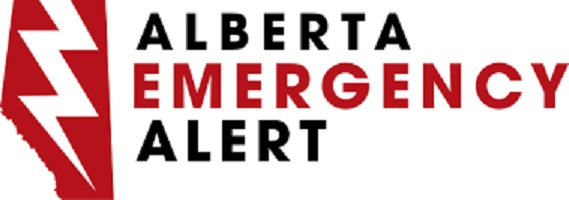
Minister of Public Safety and Emergency Services Mike Ellis issued the following statement on the upcoming Alberta Emergency Alert test:
“On Nov. 19, 2025, Alberta will take part in a scheduled test of the National Public Alerting System. At 1:55 p.m., an Alberta Emergency Alert test will be issued across multiple channels including television, radio, wireless devices, websites, social media, the Alberta Emergency Alert mobile app and directly to compatible cellphones across the province.
“While alert interruptions can be inconvenient, these tests are essential. They help us identify and resolve technical issues, ensuring the system functions properly when it matters most. Regular testing, typically held in May and November, is a key part of keeping Albertans informed during real emergencies such as tornadoes, wildfires, floods and Amber Alerts.
“To stay connected, I urge all Albertans to download the Alberta Emergency Alert app, which delivers critical warnings directly to your phone. To receive alerts, your mobile device must be compatible, connected to an LTE 4G network or higher, or connected to Wi-Fi with the app installed. If your phone is on silent, the alert will still appear but may not produce sound.
“This test is also a valuable opportunity to talk with your household, friends and coworkers about emergency preparedness. Questions to ask:
- Do you have an emergency kit with enough supplies for at least 72 hours?
- Have you included essentials like water, non-perishable food, flashlights, batteries and a first aid kit?
- Do you have copies of important documents and a list of emergency contacts?
- Is your kit stored in an easy-to-access location and does everyone know where it is?
“Preparedness doesn’t have to be complicated. Simple steps like having an emergency plan and essential supplies can make a big difference to protect yourself and your household.”
Related information
Alberta
Carney government’s anti-oil sentiment no longer in doubt

From the Fraser Institute
The Carney government, which on Monday survived a confidence vote in Parliament by the skin of its teeth, recently released a “second tranche of nation-building projects” blessed by the Major Projects Office. To have a chance to survive Canada’s otherwise oppressive regulatory gauntlet, projects must get on this Caesar-like-thumbs-up-thumbs-down list.
The first tranche of major projects released in September included no new oil pipelines but pertained largely to natural gas, nuclear power, mineral production, etc. The absence of proposed oil pipelines was not surprising, as Ottawa’s regulatory barricade on oil production means no sane private company would propose such a project. (The first tranche carries a price tag of $60 billion in government/private-sector spending.)
Now, the second tranche of projects also includes not a whiff of support for oil production, transport and export to non-U.S. markets. Again, not surprising as the prime minister has done nothing to lift the existing regulatory blockade on oil transport out of Alberta.
So, what’s on the latest list?
There’s a “conservation corridor” for British Columbia and Yukon; more LNG projects (both in B.C.); more mineral projects (nickel, graphite, tungsten—all electric vehicle battery constituents); and still more transmission for “clean energy”—again, mostly in B.C. And Nunavut comes out ahead with a new hydro project to power Iqaluit. (The second tranche carries a price tag of $58 billion in government/private-sector spending.)
No doubt many of these projects are worthy endeavours that shouldn’t require the imprimatur of the “Major Projects Office” to see the light of day, and merit development in the old-fashioned Canadian process where private-sector firms propose a project to Canada’s environmental regulators, get necessary and sufficient safety approval, and then build things.
However, new pipeline projects from Alberta would also easily stand on their own feet in that older regulatory regime based on necessary and sufficient safety approval, without the Carney government additionally deciding what is—or is not—important to the government, as opposed to the market, and without provincial governments and First Nations erecting endless barriers.
Regardless of how you value the various projects on the first two tranches, the second tranche makes it crystal clear (if it wasn’t already) that the Carney government will follow (or double down) on the Trudeau government’s plan to constrain oil production in Canada, particularly products derived from Alberta’s oilsands. There’s nary a mention that these products even exist in the government’s latest announcement, despite the fact that the oilsands are the world’s fourth-largest proven reserve of oil. This comes on the heels on the Carney government’s first proposed budget, which also reified the government’s fixation to extinguish greenhouse gas emissions in Canada, continue on the path to “net-zero 2050” and retain Canada’s all-EV new car future beginning in 2036.
It’s clear, at this point, that the Carney government is committed to the policies of the previous Liberal government, has little interest in harnessing the economic value of Canada’s oil holdings nor the potential global influence Canada might exert by exporting its oil products to Asia, Europe and other points abroad. This policy fixation will come at a significant cost to future generations of Canadians.
-

 Daily Caller2 days ago
Daily Caller2 days ago‘Holy Sh*t!’: Podcaster Aghast As Charlie Kirk’s Security Leader Reads Texts He Allegedly Sent University Police
-

 Great Reset2 days ago
Great Reset2 days agoCanadian government forcing doctors to promote euthanasia to patients: report
-

 Carbon Tax1 day ago
Carbon Tax1 day agoCarney fails to undo Trudeau’s devastating energy policies
-
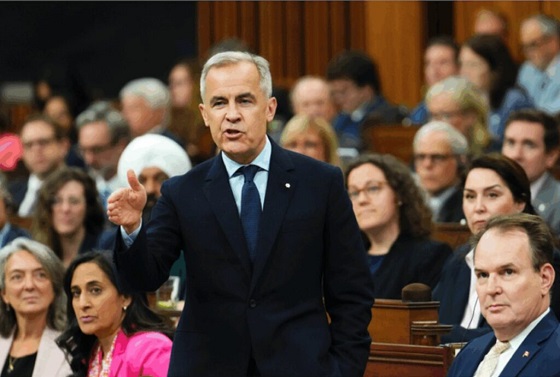
 Alberta2 days ago
Alberta2 days agoNational Crisis Approaching Due To The Carney Government’s Centrally Planned Green Economy
-

 Alberta2 days ago
Alberta2 days agoSylvan Lake football coach fired for opposing transgender ideology elected to town council
-

 Health1 day ago
Health1 day agoNEW STUDY: Infant Vaccine “Intensity” Strongly Predicts Autism Rates Worldwide
-
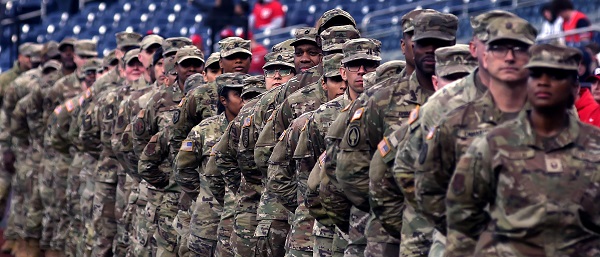
 Daily Caller13 hours ago
Daily Caller13 hours agoDemocrats Explicitly Tell Spy Agencies, Military To Disobey Trump
-

 Crime1 hour ago
Crime1 hour ago‘Modern-Day Escobar’: U.S. Says Former Canadian Olympian Ran Cocaine Pipeline with Cartel Protection and a Corrupt Toronto Lawyer


